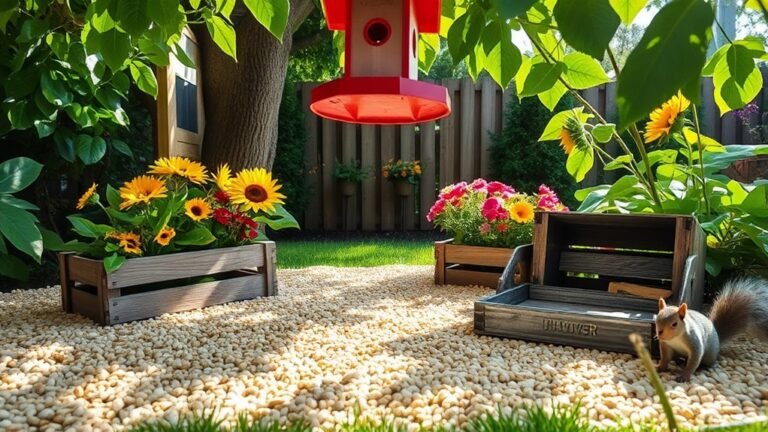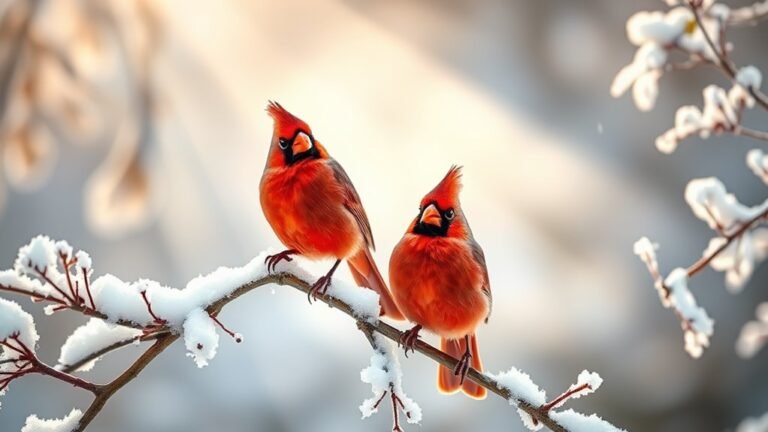When Is The Best Time to Put Up a Bird Nest Box in My Garden?
The best time to put up a bird nest box in your garden is late winter or early spring. This timing helps attract nesting birds because it coincides with their natural nesting season. Installing the box during this period allows birds to find it early. It is also helpful to know the nesting habits of the birds in your area. Consider these factors to improve your chances of success.
Key Takeaways
The best time to install bird nest boxes is late winter or early spring. This timing allows you to set up the boxes before birds start nesting.
To improve your chances of attracting birds, learn about local bird species and their nesting habits. Use high-quality materials to build the nest boxes for durability and safety.
Place the nest boxes near food and water sources to draw in birds effectively. Keep an eye on weather conditions to ensure a good environment for nesting.
By following these steps, you can create a welcoming space for birds in your garden.
Understanding Bird Nesting Seasons
Birds are a joy to see and hear all year, but knowing their nesting seasons is important for setting up a bird nest box. Different bird species have specific nesting times, which are affected by the weather and food supplies.
For instance, bluebirds often nest in early spring, while sparrows usually start later. Understanding these timelines helps you prepare your nest box properly.
Make sure the box has suitable nesting materials, like twigs, grass, and feathers. By coordinating your efforts with the natural habits of local birds, you create a welcoming space for them.
This not only helps the birds but also brings you satisfaction as a bird lover. Enjoy the rewarding experience of helping birds thrive in your area!
Ideal Times for Installing Nest Boxes
To install bird nest boxes effectively, it's important to know the nesting seasons of your local birds. The best time to set up your nest boxes is in late winter or early spring. This timing ensures that the boxes are ready when birds start looking for nesting sites.
Here are key factors to consider for installation:
- Identify local bird species and their nesting periods.
- Use high-quality materials for the nest boxes to ensure safety and durability.
- Place boxes near food and water sources for easy access.
- Choose the right height and location for easy access by birds.
- Monitor weather conditions that could impact nesting.
Factors Influencing Nesting Behavior
Understanding what influences nesting behavior is important for creating a good habitat for birds. Several factors affect whether birds choose your nest box.
First, the availability of suitable nesting materials, such as twigs, grass, and feathers, plays a significant role. If these materials are hard to find, birds may look for other places to nest.
Second, predator presence is a major concern. If predators like cats or raccoons are nearby, birds may avoid nesting in your garden.
To encourage nesting, assess your environment and take steps to reduce predator risks.
Choosing the Right Location for Your Nest Box
The success of your bird nest box depends on its location in your garden. Proper placement can improve nesting success and help your birds thrive. Here are key factors to consider:
- Nest box height: Place the box at a height of 5 to 10 feet. This reduces disturbance and improves accessibility for birds.
- Predator protection: Keep the box away from climbing plants and places where predators might perch.
- Sunlight exposure: Choose a spot that gets morning sunlight but avoids strong afternoon sun.
- Wind direction: Shield the box from strong winds to create a safe space for nesting.
- Nearby food sources: Ensure that trees or shrubs with seeds or insects are close by for easy access to food.
Selecting the Appropriate Type of Nest Box
When choosing a nest box, consider the bird species you want to attract. Different species have different nesting needs. Research the preferences of local birds.
For example, bluebirds like open boxes with drainage holes, while wrens prefer small, enclosed spaces. The materials used for the nest box matter too. Cedar and untreated wood are durable and provide good insulation.
Avoid metal or plastic because they can become too hot. Ensure the size of the entrance hole matches the bird species to keep out unwanted visitors.
Preparing Your Garden for Nesting Birds
Preparing your garden for nesting birds is important. You need to create a safe and welcoming space for them. Start by removing harmful chemicals and sharp objects from the garden. Use untreated wood or metal for nest boxes, as these materials can handle different weather.
Here are some simple ways to improve your garden for birds:
- Provide natural shelter: Plant native shrubs and trees to offer cover.
- Add a water source: Set up a small birdbath for drinking.
- Grow food plants: Include bird-friendly plants that produce seeds and berries.
- Create safe nesting spots: Place your nest box away from potential predators.
- Monitor regularly: Check for signs of bird activity without disturbing them.
These steps will help attract nesting birds to your garden. Enjoy watching them thrive in their new home!
Maintenance Tips for Bird Nest Boxes
To keep your bird nest box safe for visiting birds, regular maintenance is important. Inspect your box in spring and fall to check for any damage. Look for signs of wear, moisture, or pests.
If you see old nesting material or debris, clean it out gently using a soft brush and mild soap. Rinse the box thoroughly afterward. Avoid using harsh chemicals, as they can be harmful to birds.
Make sure the entrance hole is clear and that ventilation holes aren't blocked. After cleaning, you can apply a wildlife-safe wood treatment to help the box last longer.
Following these simple tips will create a welcoming space for birds in your garden.
Observing and Enjoying Your Feathered Visitors
Watching birds can be a fun and fulfilling activity. Here are some simple tips to make the most of your birdwatching experience:
- Create a cozy spot to sit with binoculars and a notebook.
- Set up a bird feeder with different types of seeds.
- Keep your garden quiet and peaceful.
- Use bird guides to help identify the birds you see.
- Write down your observations to notice patterns and behaviors.
These tips will help you connect more with the birds in your garden and enjoy nature.
Happy birdwatching!
Encouraging a Diverse Avian Community in Your Garden
Creating a diverse bird community in your garden involves more than just a bird nest box.
To attract various bird species, start by planting native flowers, shrubs, and trees. These plants provide food and shelter. They offer seeds and nectar while also supporting insects, which are a key food source for many birds.
Next, include accessible water sources. Birdbaths or small ponds provide hydration and bathing opportunities, drawing in different species.
Frequently Asked Questions
Can I Paint or Decorate My Bird Nest Box?
You can decorate your bird nest box. Use safe, non-toxic paints that will not harm birds. Choose natural colors to keep your feathered friends safe while adding beauty to your garden. Enjoy the process of making your nest box unique and inviting for birds.
What Materials Should I Avoid When Making a Nest Box?
When building your nest box, avoid treated wood, plastic, and metal materials. These materials can trap heat and create an unsafe environment for birds. Instead, use untreated wood. Ensure the box has proper ventilation and drainage to keep birds safe and comfortable.
How Do I Know if My Nest Box Is Occupied?
To check if your nest box is occupied, pay attention to bird activity. Observe if birds frequently visit the box. Look for signs like nesting materials being placed inside or hear chirping sounds nearby. By watching closely, you can identify if the nest box is being used.
Can I Relocate a Nest Box Once It's Installed?
You can move a nest box, but timing is key. Do it during the off-season to reduce stress for the birds. Placing the nest box in the right spot can help attract more birds. Think about the best time of year for this move to ensure the birds feel comfortable and safe.
What Should I Do if My Nest Box Attracts Unwanted Animals?
If your nest box attracts unwanted animals, take action to protect it. First, consider moving the box to a different location. Next, add barriers to keep predators away. Ensure the box is elevated off the ground and use a predator guard. Check the nest box regularly to monitor for any issues. Your birds need a safe place to thrive.

Ava is a bird enthusiast and nature lover who has spent countless hours observing and learning about the fascinating world of birds. With a passion for sharing her knowledge and inspiring others to appreciate the beauty of birds, Ava writes about her experiences and insights on avianadmirer.com.







